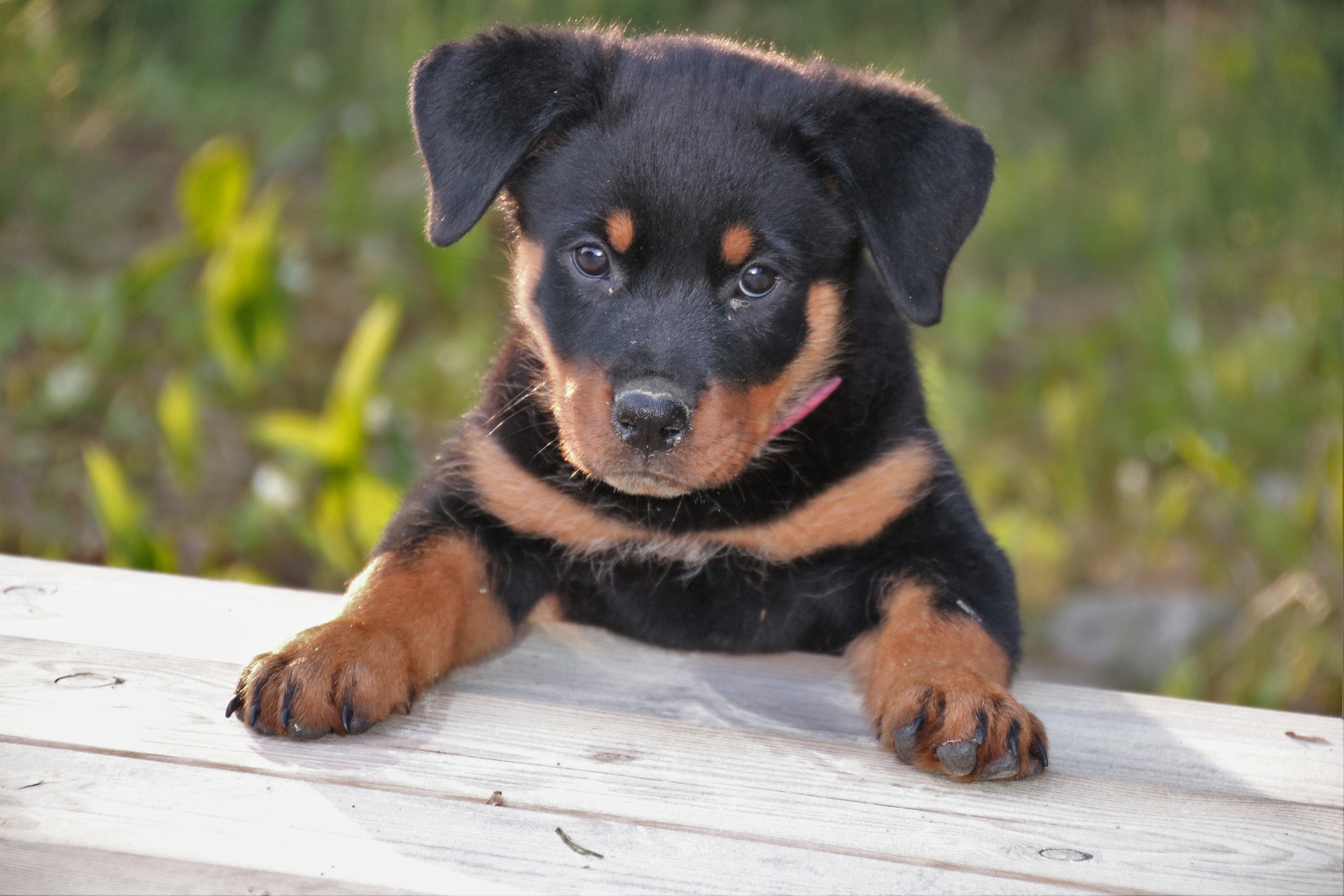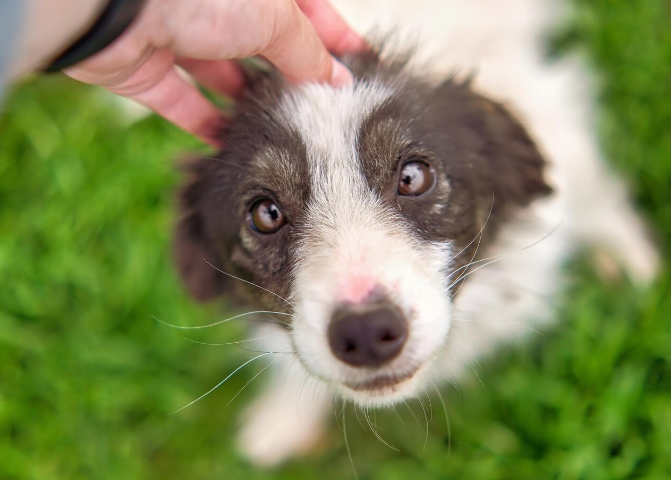
Are you thinking of getting a beautiful Rottweiler to be your beloved companion or trusted Service Dog? Here is everything you need to know about the breed before purchasing.
History
The Rottie goes back a long, long way. It is believed that this breed originates from Rome and the Romans brought these dogs with them on their invasion to Europe. When the Romans left or moved on to another place, these dogs were commonly left behind and bred with other native dogs which created the basis of the Rottweiler that we know today.
Since these dogs were commonly found in a livestock town called Rottville, this is where they got their name, the Rottweiler. Here they were used as herding dogs and helped people transport livestock because they were big and strong enough to herd animals like cows. People liked how courageous this dog was, so its popularity grew. Although it is quite similar to the Rottie we know today, it has changed a bit.
In the 19th century, Germany made cattle driving illegal, therefore the popularity of the Rottweiler started to die down. However, that wasn’t the end for this magnificent breed as they became extremely popular as war dogs, making them more in demand than ever. This led to them being used as the police dogs and guard dogs that we know them as today. They were recognized by the American Kennel Club in 1936 and since then they began to grow in popularity across the world. They are now the 8th most popular dog breed in the United States.
About
The Rottweiler has 5 known fur colors, but only 3 of them have been recognized by the American Kennel Club. These 3 color combinations are black and mahogany, black and tan, and black and rust. The other known colors of a Rottweiler are red and blue, which are quite rare.

They have an impressive size of around 24-27 inches for males and around 22-25 inches for females. They can weigh anywhere from 80-135 pounds. They have a lifespan of around 8-10 years and are part of the working dog breed group.
Male vs Female Rottweiler
The differences between the genders of this breed are insignificant. It's not about which one is better, it is about which one fits your lifestyle. Both male and female Rottweiler is just as intelligent as each other. They are also both equally loyal and protective of their families and owners. If you are looking for a guard dog, a male may be better for you as they are larger and heavier than the female.
You may find it slightly easier to train a female, but the male will be more eager to show off skills to prove his alpha style.
Temperament and Personality
The temperament of a dog can be affected but a number of different factors, such as socialization, training, hereditary, and more. Before buying a puppy, you should always be able to meet either the mum or the dad of the pups to get an idea of their temperament. It is so important that you socialize your Rottweiler, or any dog, from a young age. They need exposure to different people, animals (especially dogs), sounds, and environments. This will really help with their temperament and make them a much easier dog to handle.

Personality-wise, a Rottweiler is usually quite calm, courageous, and confident. He will rarely make friends with someone immediately. He waits to get a taste of what they are like first. You will probably never meet a shy Rottie. With their families, they are very affectionate, but won’t really get too excited. They aren’t the type of dog to jump on guests when they come into your house (they might just knock them over!). A well-trained Rottweiler will never get aggressive unless completely necessary, but it will always be protective of its family.
Training a Rottweiler
These are incredibly intelligent dogs so they should be relatively easy to train. It is very important that you start training your Rottweiler from a young age because if you start when they are older, it may take a little more time, effort, and patience. Of course, it is still possible to train them at an older age so don’t let this discourage you!
Back to socializing, it cannot be stressed enough how important this is. It is not only important for training but also for the wellbeing and happiness of your dog. Socializing can be done by taking your dog to the dog park, doggy daycare, over to friends' houses, inviting friends over, going on puppy dates….etc. You should keep every social interaction your dog has positive and happy. They should enjoy meeting new people and animals, not get angry and bark.
Positive reinforcement is an excellent training method with Rotties, especially with a reward like a treat or some kibble. This will make the training feel like a game, which is extremely effective. You should be careful with how much treats and food you are giving your Rottweiler, however, as they are very prone to obesity.
You should teach your Rottweiler not to bite from a young age. After all, they are well-known for their strong bite. As a puppy, if they try to bite you, even when playing, act hurt and say a firm “No!”. You should also ignore them for a few minutes completely. This will show them that biting n=means no attention, no fun, and an unhappy owner!
Rottweilers as Service Dogs
Since Rottweilers are a part of the working dog breed group, they make excellent Service Dogs. They have a loving personality and are willing to help their owner at all costs. Oftentimes, Rottweilers are overlooked as Service Dog due to their label as a “bully breed”. But in reality, they have both the physical and emotional traits that make a good Service Dog.
Due to their size, they will work best with mobility-related tasks. They will also be great at tasks like retrieving medication, turning off and on lights, opening doors, etc. They can be trained to get someone for help if in need, and so much more. These dogs are so intelligent and obedient. If you want them to do a specifically trained task, they will do it with the correct training.
If you are interested in training your Rottweiler to be a Service Dog yourself, check out our Service Dog Courses here.
Rottweiler Health Issues
Rottweilers are generally healthy dogs, but just like all breeds, they can be prone to some health conditions. Not all Rotties will get one of these but it is important to be aware of the possible illnesses for safety.
• Hip and Elbow Dysplasia- this occurs when one joint doesn’t join snuggly into the other. This can cause pain and discomfort for some dogs but others may show no discomfort at all. If your dog has hip dysplasia, it should not be bred. Surgery can be done to help this.
• Gastric Dilatation-volvulus(GDV)- this is a life-threatening condition which mainly occurs in larger, deep-chested dogs and older dogs. It happens when the stomach is distended with gas or air and it twists. This causes blood pressure to drop, putting the dog in shock. If the dog does not get medical attention immediately, it can die.
• Aortic Stenosis- this occurs when the aorta narrows, which forces the heart to work harder. This can cause fainting and in worst cases, sudden death. It is an inherited disease. Vets will diagnose it when they find a heart murmur.
• Osteosarcoma- this is a bone cancer commonly found in larger dogs. To treat this, the limb is usually amputated along with chemotherapy.
Caring For Your Rottweiler
Feeding: a Rottie eats a lot! They have a recommended daily amount of 4 to 10 cups of dry food per day, divided into 2 meals. Of course this will depend on your dog's size, their energy levels, how much exercise they are getting.

Grooming- you should brush your Rottweiler weekly with a firm bristle brush which will remove any dead hairs. This breed sheds twice a year. You should brush them more during those periods. Only bathe them when you have to, they are generally clean dogs.
Try to brush their teeth at least 2-3 times per week. It is a good idea to get your Rottweiler used to being groomed at a young age so it’s not much of a problem when he is older. Keep it a positive experience, so they will enjoy it more!












